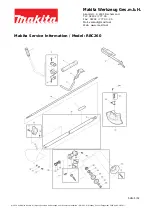
9.3.4.2
Force Enumeration
If set, the enumeration process will be re-applied to the device.
9.3.4.3
Radio Type
The radio type field provides support for alternate radio technology.
Radio Type
None
0
0
0
Omega Sub Ghz
0
0
1
BLE
0
1
0
reserved
.
.
.
9.3.4.4
Sub GHz Radio Options
The Radio Option byte provides additional configuration control and is radio-specific.
Radio Option Byte
15
14
13
12
11
10
9
8
Reserved
Band
Omega Sub GHz (??)
0
0
0
Omega Sub GHz (915 Mhz)
0
0
1
Omega Sub GHz (863 Mhz)
0
1
0
Omega Sub GHz (?? Mhz)
-
-
-
reserved
X
X
X
9.3.4.5
Radio Options (Sub GHz)
Radio Options Sub GHz
15
14
13
12
11
10
9
8
Power Management
Reserved
HIGH
POWER
Reserved Reserved
Note:
The Radio Type and Radio Options fields (bits 5..12) are locked for Factory only configuration.
9.3.4.6
High Power
The Sub GHz Power level bit enables the Power Amplifier on the Sub GHz radio assembly.
9.4
Sensor Interface
Smart Probe devices share a common platform architecture that provides extensive monitoring and control
capabilities through a set of platform generic registers. These registers may be accessed using I2C based commands
directly to the Smart Probe devices or through a set of Modbus-based registers when using Omega Interface devices.
Refer to the
Smart Sensor Device Interface
manual for further information.
When powered on or after a device reset each Smart Sensor-based device will enumerate 1 or more sensor
instances which are described by the device-specific Sensor Descriptors which include configuration options,
measurement type, and units of measure for the corresponding sensor values. Additional sensor information is
provided in sensor-specific IPSO object descriptions which include extended measurement type, precision, and
tracking of minimum/maximum readings. Each enumerated Sensor has a Descriptor Base address location and a
Sensor IPOS / Configuration structure address location based on the sensor mix selected.
25
|
P a g e










































